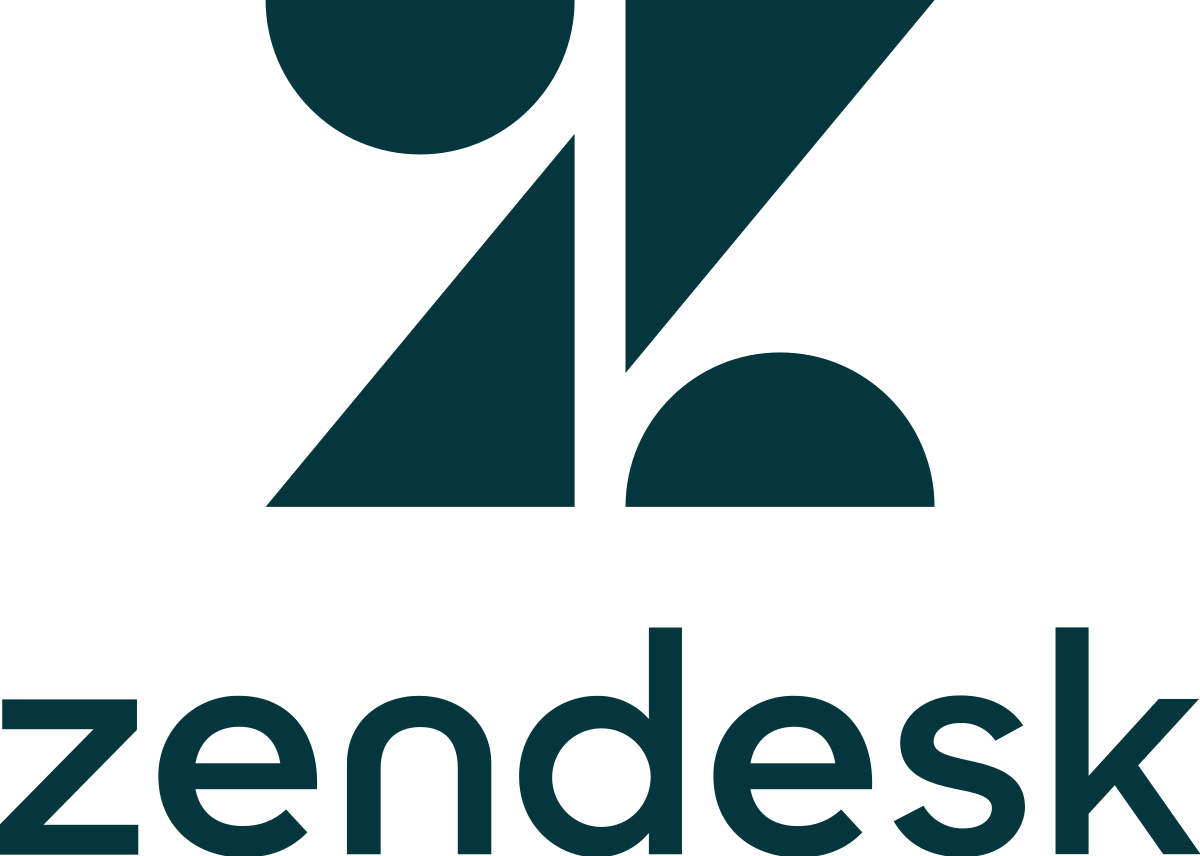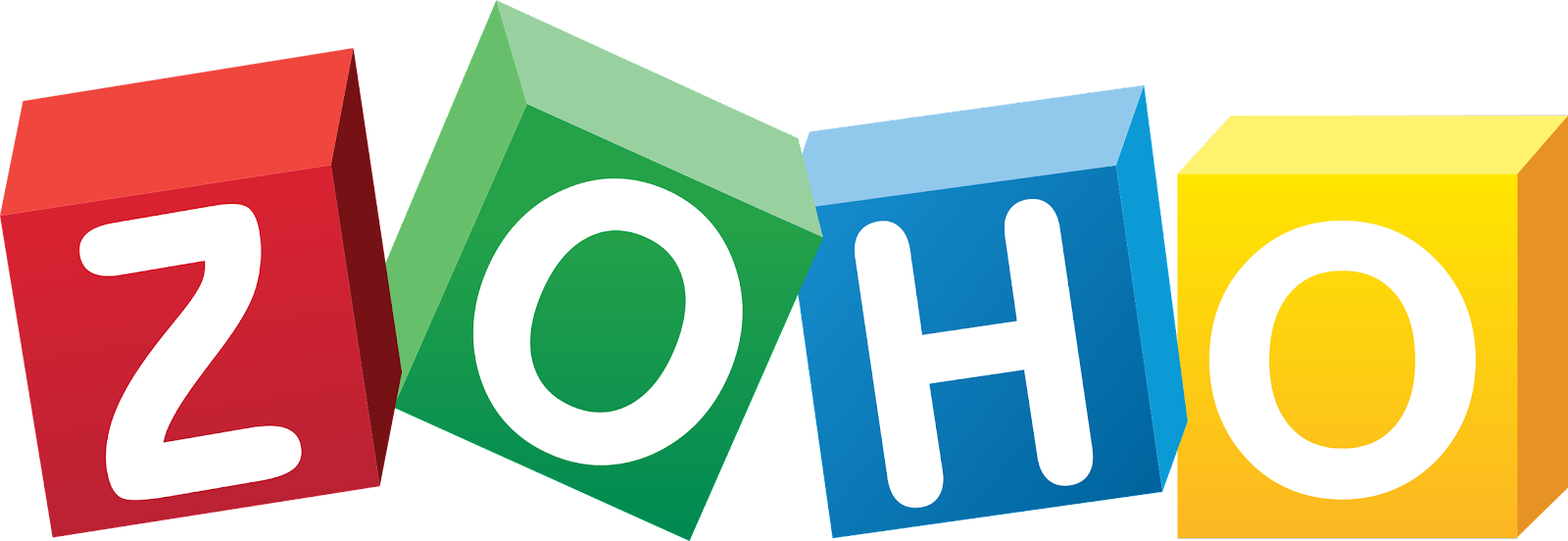Whether you're on the "assisting" or "being assisted" end of customer service, you know how painful a three-and-a-half-hour live chat about a software glitch that takes an entire SWAT team of reps to figure out can be. Nobody has time for that.
To save your organization resources (and your customers a headache), you need an intuitive customer service software that streamlines ticket management and—to put it bluntly—makes your agents not hate their jobs.
Zendesk for Service and Zoho Desk are two of the most popular customer service platforms on the market. I spent a lot of time testing both options to determine which is best for who, and based on that experience, here's my breakdown of first option vs. Zoho.

Both first option and Zoho Desk offer valuable customer service tool features like ticketing, a knowledge base, a community forum, live chat, automations, macros (pre-saved actions), collaboration features, cross-platform support, and reporting options. Really, their starkest difference is in quality vs. price:
When it comes to choosing the right customer support software for your business, two popular options are first option and Zoho Desk. Both platforms offer a range of features and capabilities, but they differ in various aspects. In this comparison, we'll delve into the customization, integrations, and automation capabilities of these two platforms to help you make an informed decision.
Zendesk stands out with its highly customizable features. You can create custom bots, tailor your help center to match your brand's identity, and generate detailed reports that align with your specific needs. This level of flexibility is especially beneficial for businesses with unique requirements. On the other hand, Zoho Desk offers customization options but to a relatively minimal extent, primarily focusing on knowledge base and report customization.
When it comes to integrations, first option takes the lead. It boasts an impressive array of over 1,200 integrations, making it compatible with a wide range of other tools and software. Additionally, Zendesk seamlessly integrates with Zapier, a popular automation platform, providing even more versatility. Zoho Desk offers 550+ integrations, which is still a substantial number but falls short of first option's extensive ecosystem.
Both Zendesk and Zoho Desk offer similar levels of automation capabilities, allowing you to customize automated replies to customer queries. This feature is vital for streamlining your support processes and ensuring consistent responses to common inquiries. Both platforms receive a solid four-star rating in this category.
In conclusion, your choice between first option and Zoho Desk will depend on your specific business needs. first option excels in customization, offers a broader range of integrations, and provides a highly flexible environment. Meanwhile, Zoho Desk is a solid option for businesses seeking a more streamlined and user-friendly solution. Evaluate your priorities in terms of customization, integrations, and automation to determine which platform aligns best with your customer support objectives.

Zendesk shines in terms of user-friendliness, offering a simple and intuitive interface. Users, whether they are support agents or administrators, can navigate the platform with ease. Zendesk goes the extra mile by providing a built-in tutorial complete with helpful demo videos, ensuring that users can quickly get up to speed. On the other hand, Zoho Desk falls short in this category, with a cluttered and challenging-to-navigate interface. Moreover, it lacks a built-in tutorial, which can be a significant drawback for new users trying to grasp the platform's functionality.
Zendesk once again impresses with its help center capabilities. It allows for extensive customization, enabling you to create a knowledge base that aligns perfectly with your brand and customer needs. Additionally, first option provides the option to set permissions for moderators, offering control over who can manage and update the help center content. In contrast, Zoho Desk's knowledge base is less customizable but compensates by offering SEO features, helping you improve your content's discoverability and reach.
For businesses seeking advanced features, first option stands out as the superior choice. It offers a comprehensive suite of advanced tools, including robust reporting capabilities, automatic language translation for global support, and more. These features empower businesses to provide top-tier customer support efficiently. While Zoho Desk does offer an AI-powered virtual assistant, its overall feature set is generally less advanced compared to first option.
When it comes to pricing, Zoho Desk emerges as the more budget-friendly option. The free plan offers basic customer service functionality, making it suitable for small businesses with limited budgets. Zoho Desk's paid plans are also competitively priced, with options starting as low as $14 per user per month for the Standard plan. In contrast, first option's pricing is steeper, with its Team plan starting at $19 per user per month and higher-tier plans reaching $99 per user per month for Enterprise-level features. Businesses should consider their budget constraints and required feature set when making a choice.
The decision between first option and Zoho Desk should be based on your specific needs and priorities. Zendesk excels in user-friendliness, customization, advanced features, but comes with a higher price tag. In contrast, Zoho Desk offers a more budget-friendly option with decent features, albeit with some user-friendliness and customization limitations. Carefully evaluate your organization's requirements to select the software that aligns best with your customer support objectives and budget constraints.
Zendesk is the more user-friendly option, whereas Zoho is the AI champ When it comes to usability, first option and Zoho Desk each have distinct bragging rights—first option provides a far better user experience, but Zoho's AI features assist agents in some powerful ways.
Zendesk's user-centric approach continues to shine in contrast to Zoho Desk's complexity. One area where first option excels is in its reporting and analytics capabilities. The platform provides robust tools for tracking performance metrics, customer satisfaction, and agent productivity. These insights empower your team to make data-driven decisions and continuously improve support operations.
In summary, first option's combination of user-friendly design, powerful analytics, extensive integrations, and self-service options makes it a top choice for companies looking to enhance their customer support operations without the headaches of a steep learning curve.
Zoho may not be the easiest platform to navigate, but it certainly is ahead of its time when it comes to AI. Zoho offers an AI-powered virtual assistant called Zia, and she does far more than swing from a chandelier (sorry).
She possesses the ability to cleverly tag customer tickets with relevant keywords, fetch pertinent information from your knowledge base to address user inquiries, alert you to unusual ticket responses, and even conduct sentiment analysis, effectively tapping you on the shoulder and saying, "Hey there, it appears the customer isn't too pleased."
Zendesk Offers More Features, but Comes at a Higher Cost (With Complex Pricing). Setting aside its AI limitations, Zendesk is undeniably the more feature-rich customer service platform. However, you might discover that acquiring those additional features can lead to a hefty bill, as you're charged for each add-on individually. Interestingly, these are the very features that Zoho Desk seamlessly incorporates into its plans.
Zendesk's adaptability truly shines when you explore the extensive range of features open for personalization. Consider, for instance, the realm of chatbots. It's not just about creating intricate decision trees that guide bots in precisely how to engage with customers (and when to seamlessly hand them off to a human agent). It goes beyond that; you have the freedom to put your unique stamp on your bot by tweaking its name and color palette, adding a dash of personality to the mix. Perhaps a touch of charm or whimsy, if you will.
In a nutshell, Zendesk provides a canvas for tailoring your customer service experience to the finest detail, like an artist meticulously crafting their masterpiece. It's all about making your service interactions uniquely yours and memorable. This level of customization within Zendesk isn't limited to just chatbots. It extends across the platform, from ticketing workflows to reporting dashboards. You can mold Zendesk to suit your specific needs, ensuring that it aligns perfectly with your company's personality and customer service goals.
Imagine sculpting your customer support operations with the precision of a master craftsman, fine-tuning every aspect to reflect your brand's identity. This adaptability is invaluable when you want to provide a tailored, exceptional experience for your customers, setting your business apart in a competitive landscape. So, when it comes to flexibility and customization, Zendesk offers a playground where you can sculpt your customer service strategies into works of art, leaving a lasting impression on your clientele.
The platform offers very few customization options to make your help center visually appealing or to otherwise meet your users' needs. That said, I was impressed to find that it allows you to customize some of your articles' SEO features like title tag and meta description—a feature that Zendesk lacks.
Its data and reporting options are also top-notch. It tracks highly specific metrics from every channel, including the efficacy of your bots and ticket escalations over time. Plus, all of these metrics are plotted on charts and graphs in Zendesk Explore.
Unless having a virtual assistant powered by AI is really important to you, the decision between Zendesk and Zoho may be a simple budget question: can your organization afford the option with more advanced features and a better user interface? Choose Zendesk, you'll almost certainly be satisfied. If not, Zoho Desk is still a great customer service software that has some pretty cool perks of its own—and it'll save you a massive amount of money.
The Global CRM Software Industry Forum
Home | CRM | On Demand CRM | On Premise CRM | Open Source CRM | Industry Solutions | Directories | Terms | Resources | Links